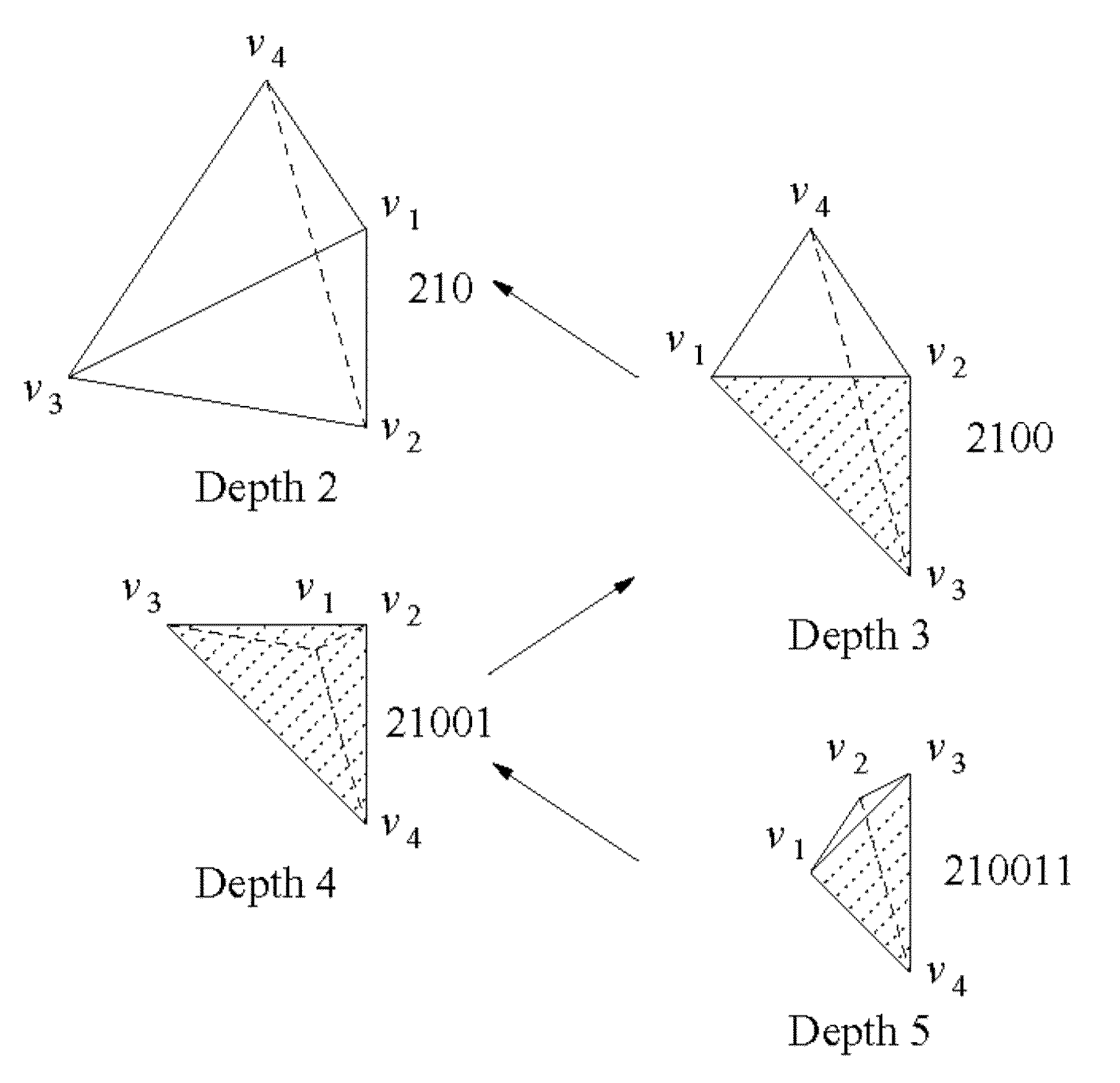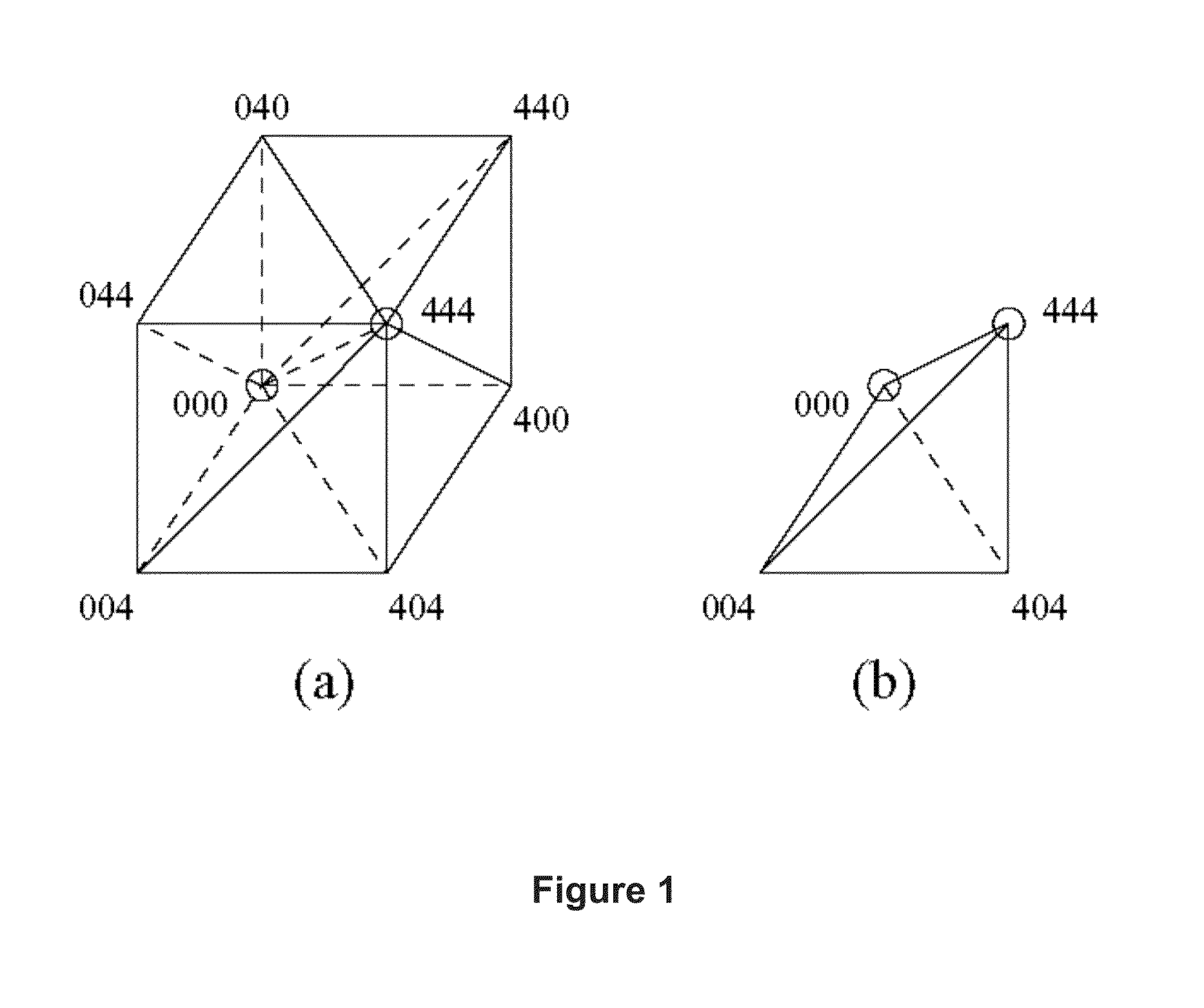Spatial decomposition methods using bit manipulation
a bit manipulation and decomposition method technology, applied in the field of image decomposition strategies and computer-based methods, can solve the problems of inability to provide real-time manipulation of 3d images from pc platforms, inefficient pointer-based binary tree structure, computer processing requirements, etc., to increase the amount of data stored, enhance analytical options for data, and enhance the effect of speed
- Summary
- Abstract
- Description
- Claims
- Application Information
AI Technical Summary
Benefits of technology
Problems solved by technology
Method used
Image
Examples
Embodiment Construction
[0056]The embodiments described here should not be taken as a limitation of the scope of the invention. One skilled in the art, possessing the knowledge and teachings of this application, can devise and create numerous other embodiments, uses, and derivatives of the methods and systems described.
[0057]Throughout this disclosure, sources of information, such as journal articles, patent documents, or web pages are listed for various purposes. Each of the papers, journal articles, patent documents, and information sources listed or referred to anywhere in this disclosure are hereby incorporated by reference into this document in their entirety. Furthermore, the full contents of any and all of these sources can be used and relied on to make and use aspects of this invention.
Tetrahedral Decomposition Example
[0058]I first describe some of the basic operative functions common to the aspects of the invention by employing tetrahedral meshes. As explained previously, other polygons or shapes ...
PUM
 Login to View More
Login to View More Abstract
Description
Claims
Application Information
 Login to View More
Login to View More - R&D
- Intellectual Property
- Life Sciences
- Materials
- Tech Scout
- Unparalleled Data Quality
- Higher Quality Content
- 60% Fewer Hallucinations
Browse by: Latest US Patents, China's latest patents, Technical Efficacy Thesaurus, Application Domain, Technology Topic, Popular Technical Reports.
© 2025 PatSnap. All rights reserved.Legal|Privacy policy|Modern Slavery Act Transparency Statement|Sitemap|About US| Contact US: help@patsnap.com



